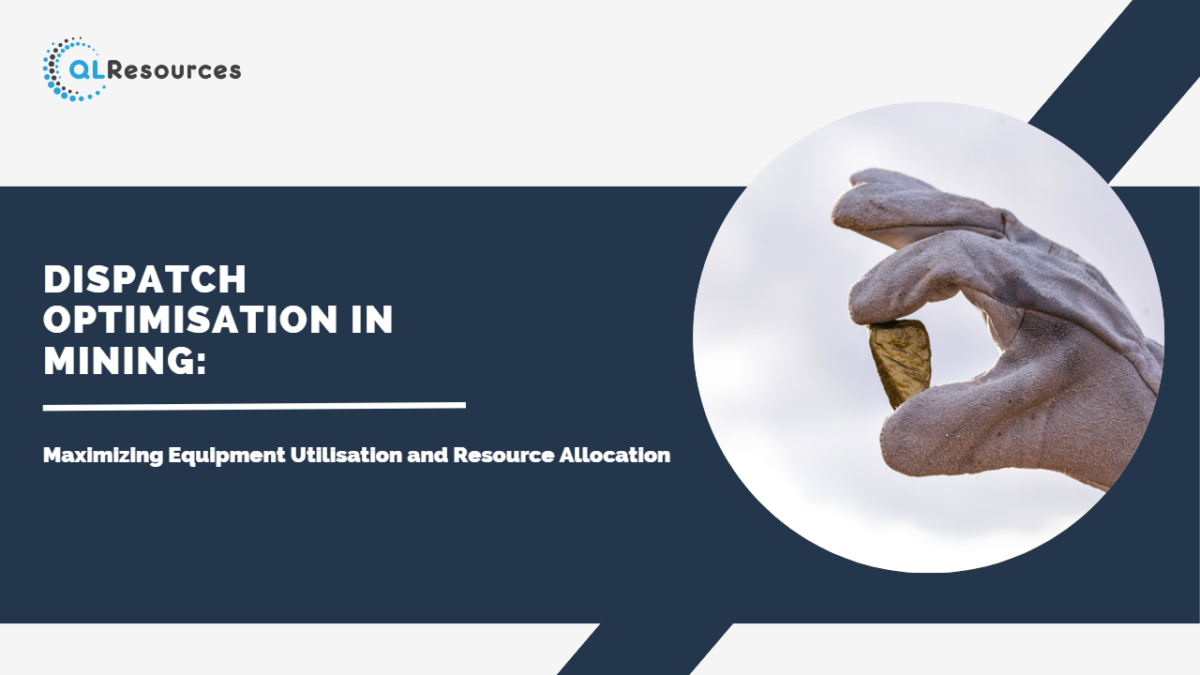In the mining industry, efficient equipment utilisation and effective resource allocation are crucial for maintaining productivity and reducing operational costs. Dispatch optimisation plays a pivotal role in achieving these objectives by ensuring that equipment is deployed optimally and resources are allocated efficiently. In this blog post, we will explore the importance of dispatch optimisation in mining and how it maximises equipment utilisation and resource allocation.
Real-time Equipment Monitoring:
Dispatch optimisation involves real-time monitoring of equipment, enabling mining operations to track the location, status, and availability of each machine. By integrating advanced tracking technologies and sensors, mining companies can gather data on factors such as equipment utilisation, fuel consumption, and maintenance requirements. This real-time monitoring allows for better decision-making in dispatching equipment, ensuring that machines are deployed where and when they are most needed.
Predictive Maintenance and Downtime Reduction:
Dispatch optimisation enables mining companies to implement predictive maintenance strategies. By analysing equipment data and performance indicators, potential issues can be identified in advance, allowing for proactive maintenance and reducing unexpected downtime. Optimising equipment dispatch based on maintenance schedules ensures that machines are taken offline for servicing at the most opportune times, minimising disruptions to production and maximising uptime.
Efficient Resource Allocation:
Dispatch optimisation helps mining companies allocate resources effectively by considering factors such as equipment availability, skill requirements, and task priorities. By analysing data on equipment utilisation and production targets, dispatch systems can determine the most efficient allocation of resources, including trucks, loaders, and personnel, to specific tasks and locations. This results in improved operational efficiency, reduced idle time, and enhanced productivity across the mining site.
Route Optimisation and Fuel Efficiency:
Dispatch optimisation involves optimising the routing of equipment within the mining site. By analysing factors such as distance, terrain, traffic, and task requirements, the dispatch system can determine the most efficient routes for equipment movement. This not only saves time but also reduces fuel consumption and associated costs. Route optimisation ensures that equipment is dispatched along the most direct and least congested paths, maximising efficiency and minimising unnecessary travel.
Enhanced Safety and Risk Management:
Dispatch optimisation contributes to improved safety and risk management in mining operations. By considering factors such as equipment capacity, load characteristics, and safety guidelines, dispatch systems can ensure that tasks are assigned to appropriate equipment and operators. This reduces the risk of accidents, equipment damage, and operational disruptions. Dispatch optimisation also enables the monitoring of compliance with safety protocols and provides insights for proactive safety measures.
Data-driven Decision Making and Continuous Improvement:
Dispatch optimisation relies on data-driven decision making. By collecting and analysing data on equipment performance, task requirements, and operational constraints, mining companies can make informed decisions to optimise dispatch strategies. Regular evaluation of key performance indicators allows for continuous improvement and the identification of areas where further optimisation can be achieved. Through ongoing analysis and refinement, dispatch optimisation becomes a dynamic process that supports operational excellence in mining.
Conclusion:
Dispatch optimisation plays a vital role in maximising equipment utilisation and resource allocation in the mining industry. By leveraging real-time equipment monitoring, predictive maintenance, efficient resource allocation, route optimisation, enhanced safety, and data-driven decision making, mining companies can improve productivity, reduce operational costs, and ensure optimal use of their resources. Dispatch optimisation serves as a catalyst for continuous improvement, allowing mining operations to adapt to changing conditions, optimise their operations, and maintain a competitive edge in the industry.

